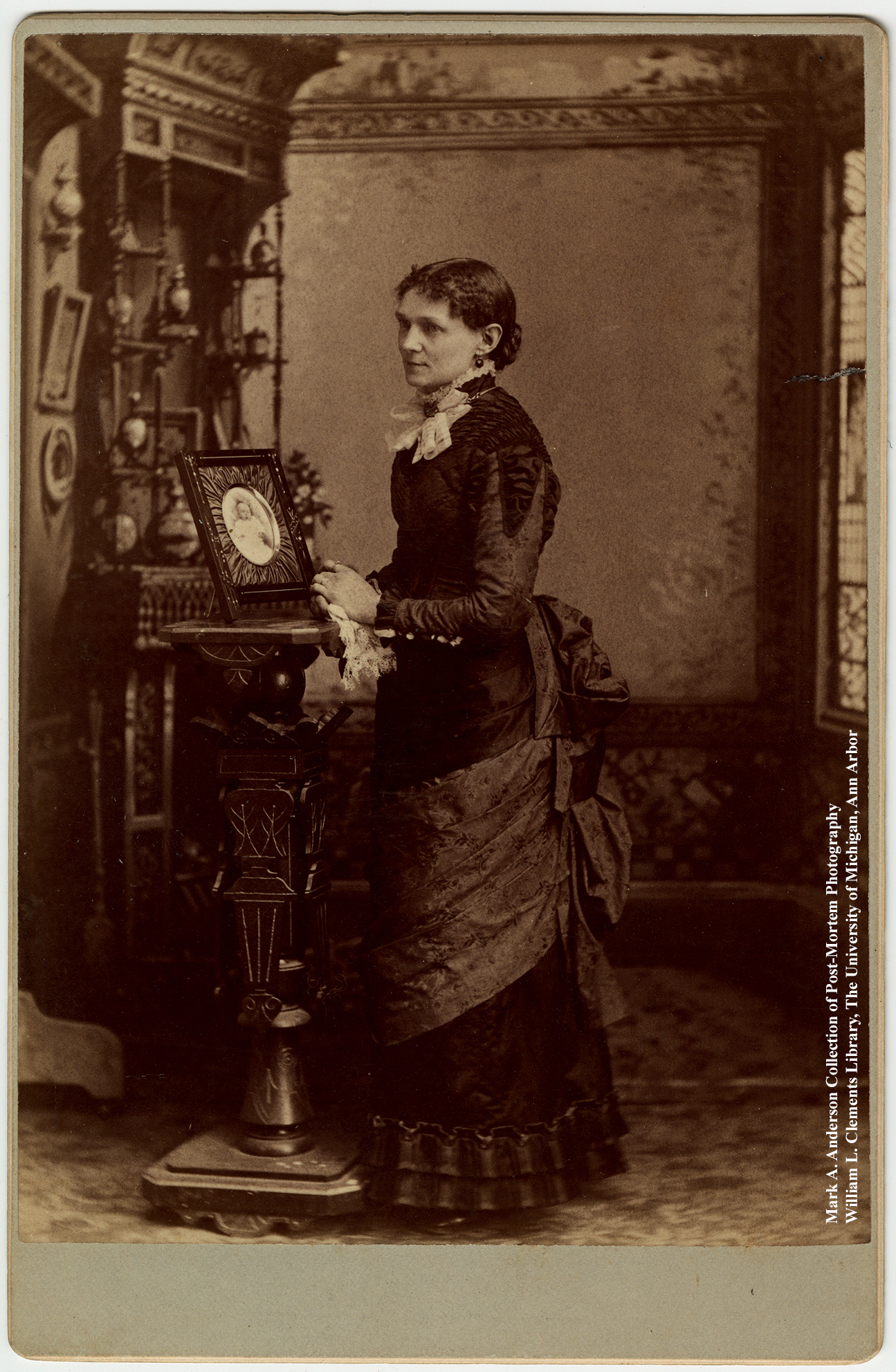Mourning Fashion
Women in the Victorian period adhered to semi-rigid social rules for mourning. They were expected to wear appropriate mourning clothes for set periods of time following the death of a family member. The time-frames for stages of mourning and the lengths of those stages varied by community and family. The following suggests typical mourning periods:
| A widow for a husband: | A year and a day, to life |
| A widower for a wife | 3-6 months |
| Parent for a child: | 6-12 months |
| Child for a parent: | 6-12 months |
| For a grandparent: | 6 months |
| For an aunt or uncle: | 3 months |
Women would move from periods of “deep” to “ordinary” to “light” mourning. Each stage had its own accepted fashions. Deep mourning took place immediately after the death. Women would wear black dresses and bonnets without decorative trims. Black veils, crepe on their dresses, gloves, shoes, and accessories were also black. During ordinary mourning, women could abandon the veil and crepe, introduce ornate jewelry and add white trim to dresses. Lilac, purple, and gray were permissible when a woman entered light mourning. Men were not expected to adhere to rigid mourning rules. Following the burial, they were expected to return to work in order to support the family. Men could wear a long crepe band on his hat called a “weeper.” The width of the weeper around his hat represented his relationship with the deceased. Other optional men’s fashions included black armbands or a black ribbon on the lapel.
The photographs in this case belong to the Mark A. Anderson Collection of Post-Mortem Photography.
Left: H. G. Hughson, [woman dressed in deep mourning clothes], cabinet card: ca. 1880s-1890s.
Middle: [Woman dressed in deep mourning clothes], tintype: 19th century.
Right: Van Aken, [woman dressed in deep mourning clothes, with a miniature portrait brooch], cabinet card, Elmira, New York: ca. 1880s-1890s.
Left: [Woman dressed in an elegant “ordinary” mourning dress, with a portrait of her child], cabinet card: ca. 1870s.
Middle: The Maynard Art Gallery, [family in mourning clothes with a portrait of their child], cabinet card, Napoleon, Ohio: ca. 1880s-1890s.
Right: Charles Hamer, [man in a black suit, with a portrait of a child], cabinet card, Columbus, Ohio: ca. 1880s-1890s.
Julia Sherman to Eliza F. Bean, Sandwich Centre, [New Hampshire]: October 22, 1843. Hoit Family Papers.
Julia Sherman’s letter to her sister shows the struggle that women of modest means would go through to adhere to social standards for mourning. Following the death of her husband, Sherman’s mother-in-law would not let her borrow the appropriate black clothes. As a result, she borrowed a shawl from a store and purchased cheaper clothing to dye blue-black.
“I had clothes which E gave me when he sold out which I have exchanged in the store for mourning goods and have been able thus far to pay for every thing I have had nor has an article been offered me although I have borrowed a shawl in the store to wear a few times until I could get one colored although mother has one like it she has not ever offered to lend it to me even on the day I most needed it and had to wear a blue black one which was borrowed for me. She wore her jet black one which father gave her this summer and like which they have them in the store they are small thibet and 3.50 which I thot I could not afford to get and have sent the [ ] with my de laine to both be colored – I merely mention this to show you the difference that could be if our dear dear mother was living.”











